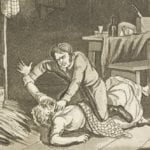 Music
Music  Music
Music  History
History 10 Less Than Jolly Events That Occurred on December 25
 Weird Stuff
Weird Stuff 10 Funny Ways That Researchers Overthink Christmas
 Politics
Politics 10 Political Scandals That Sent Crowds Into the Streets
 Weird Stuff
Weird Stuff Ten Bizarre Facts About The Doge Meme
 Our World
Our World 10 Ways Your Christmas Tree Is More Lit Than You Think
 Movies and TV
Movies and TV The 10 Coolest Stars to Set Sail on The Love Boat
 History
History 10 Things You Didn’t Know About the American National Anthem
 Technology
Technology Top 10 Everyday Tech Buzzwords That Hide a Darker Past
 Humans
Humans 10 Everyday Human Behaviors That Are Actually Survival Instincts
 Music
Music 10 Surprising Origin Stories of Your Favorite Holiday Songs
 History
History 10 Less Than Jolly Events That Occurred on December 25
 Weird Stuff
Weird Stuff 10 Funny Ways That Researchers Overthink Christmas
Who's Behind Listverse?

Jamie Frater
Head Editor
Jamie founded Listverse due to an insatiable desire to share fascinating, obscure, and bizarre facts. He has been a guest speaker on numerous national radio and television stations and is a five time published author.
More About Us Politics
Politics 10 Political Scandals That Sent Crowds Into the Streets
 Weird Stuff
Weird Stuff Ten Bizarre Facts About The Doge Meme
 Our World
Our World 10 Ways Your Christmas Tree Is More Lit Than You Think
 Movies and TV
Movies and TV The 10 Coolest Stars to Set Sail on The Love Boat
 History
History 10 Things You Didn’t Know About the American National Anthem
 Technology
Technology Top 10 Everyday Tech Buzzwords That Hide a Darker Past
 Humans
Humans 10 Everyday Human Behaviors That Are Actually Survival Instincts
10 Ghastly Prison Practices Of The 19th Century
Most of us are pretty keen on staying out of prison. We have good reason, too. Part of the idea behind imprisonment is to deter criminal offenses. But this wasn’t always the case in Western societies. In the 16th and 17th centuries, a prison existed only as a place to hold offenders before their trial was conducted. Once punishment, be it corporal or capital, was carried out, the prisoner was no longer held. The closest thing to a modern prison was a house of correction, a place to reform beggars and unwed mothers, or a debtors’ prison, a place to keep people until their debts were paid. But in the late 18th century, the prison population of Great Britain exploded.[1] The Revolutionary War in America cut them off from their prisoner dumping grounds, and it was roughly another decade before Australia’s biggest import became convicts.
During this decade in which the British had to keep their prisoners to themselves, the public began to take notice of the condition of the prison system. In 1777, John Howard took an inventory of prisons and reported that the whole system was a mess. Prisoners were heaped on top of one another regardless of gender, age, or illness. Many died from violent attacks or the rampant spread of disease. Jailers were corrupt. They charged prisoners exorbitant fees while keeping them locked up with no way to make a living. Howard suggested the model that would inform imprisonment during the 19th century, focusing on security, health, separation, and reform.
An outcry for prison reform would drastically shape the establishments of that century toward reforming convicts rather than keeping them locked up indefinitely or physically punishing them. Ideas would be batted back and forth across the pond and would lead to interesting new ways of keeping prisoners. However, the new ways wouldn’t necessarily be less brutal or exploitative than the old. In fact, they would be much, much worse in ways that the 18th-century prisoner could never have imagined.
10 Sanitation
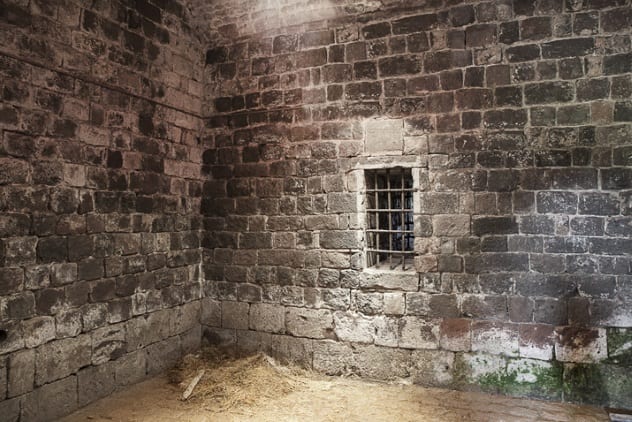
Despite the push to safeguard prisoner health, the squalid conditions persisted long into the Victorian era. Towns and cities were growing at rates that caused huge infrastructure problems in already cramped places like London. The biggest question on everyone’s mind was sanitation as human waste literally filled the streets. The second biggest question on everyone’s mind was how to control the criminal population as they also filled the streets. More people meant more anonymity for criminals, a luxury most were experiencing for the first time. Before the majority of the population started to worry about things like prison reform, they were worried about imprisoning as many criminals as possible as fast as possible. This led, initially, to cramped quarters where prisoners were practically on top of one another with little to no waste removal or clean water.
Outbreaks of typhus ravaged the small holding prisons known as gaols, so thoroughly that it earned the nickname “gaol fever.” A prisoner’s chances of dying doubled when they entered the building. Even though the 19th century brought reform, the prisons built then weren’t much more sanitary. Sing Sing, opened in New York in the 1820s, started off poorly from the very beginning.[2] Situated in a hollow between the Hudson and a hillside, it was doomed to be damp even when it wasn’t flooding. Prisoners were kept in tiny cells of stale air with a bucket of their own waste in the corner. Worse still, no pipes in the building had a double bend to stop filthy air coming back in, or proper ventilation to let it out. In the winter, when windows were closed, the only air supply came from sewage pipes. Every whiff of air in the place would have been suffused with human filth. Besides being a huge health hazard, it must have been a true olfactory nightmare.
9 Overcrowding

The poor sanitation stemmed directly from the overcrowding in 19th-century prisons. Initially, overpopulation was solved in London by shipping inmates to far-off colonies. But by the 1830s, both Australia and the United States refused to be dumps for Great Britain’s criminals. That was one more thing they didn’t need to worry about while settling new communities and unsettling indigenous peoples. As this form of exile was taken off the table for Great Britain, imprisonment itself was becoming an acceptable form of punishment. As can be imagined, this didn’t help the overcrowding in the least. Ninety new or expanded prisons cropped up between 1842 and 1877.[3]
Around the mid-Victorian period, two types of prisons had formed. The first was the county and shire gaols, small lockups and houses of correction administered by justices of the peace. The second type of prison was the convict gaol. These were bigger prisons run by the central government in London. They were initially large buildings set into the heart of London but were gradually built more and more near ports. This was because Great Britain had a unique solution to their overcrowding problem that efficiently recycled their earlier system of exile. When prisons on land became too stuffed to fit another inmate, massive decommissioned warships were refitted to house prisoners. They were aptly named “hulks.”
8 Hulks

These huge ships-turned-prisons didn’t disappear when banishing criminals to colonies became impossible. Instead, they evolved into traveling labor camps that operated on much of the same protocol as naval vessels.[4] Prisoners were not locked in tiny cells but instead were locked in communal decks at night where they slept in hammocks. Inside, they were free to walk around, converse, argue, have sex, and trade illegal goods among themselves. Later on in the operation of many hulks, evening classes where convicts learned to read and write became standard. During the day, the inmates of the warships would be mustered about to bathe, clean the ship, cook, eat, and go ashore to work at the ports. The work would easily qualify as hard labor. Prisoners would unload ships and dredge canals while wearing leg irons.
Given the nightly freedom and the chance to learn new skills, many free men contemplated getting arrested for the opportunity to work on a hulk. Prisoners got three meals a day and sometimes got pay for their work when they were released. However, conditions aboard the ships were not more sanitary than off, and the food was disgusting and monotonous. Breakfast would be toasted bread and a cup of cocoa, and dinner would be 6 ounces of meat with a large helping of bread and potatoes. Fruits and vegetables were rarely part of the plan. The water used to make cocoa and clean off was often pulled up from the Thames, which isn’t exactly known for its sparkling, clean waters. Deaths from cholera and work injuries were common, but officials refused to admit it. The freedom enjoyed by prisoners had its drawbacks as well—being unsupervised in a large deck stuffed with various criminals isn’t everyone’s idea of a good time.
In 1857, the last of the hulks was decommissioned and burned. Originally brought in to help with overcrowding, hulks actually ended up making the problem worse. Many assumed that the hulks would always be there to take on excess prisoners, so jails and prisons on land were often built too small and cramped. Bedford was one prison where the staff had assumed they would always be able to cart local convicts off somewhere. When exile and prison hulks disappeared, the gaol was far too small for the local population.
7 Debt Spirals
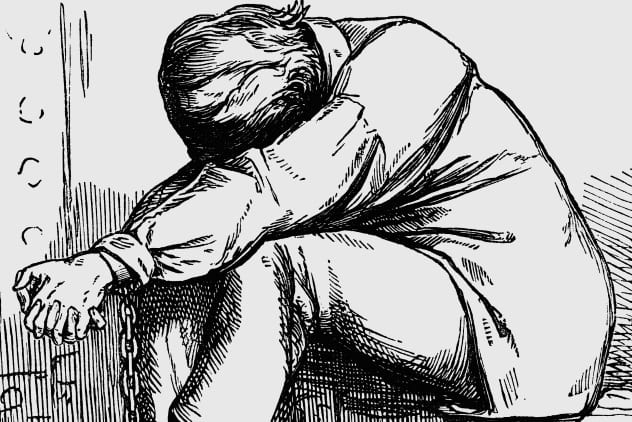
Debtors’ prison was a fear somewhere in the mind of every person, poor or wealthy, in the 19th century. These prisons were run for profit and were viewed as an investment by those who built them. Thus, they were run like businesses. Prisoners were given the opportunity to pay for better lodgings and food while working on their debts, but the poorest were forced into damp cells with no windows. These prisoners would often be children or the mentally ill.[5] Sometimes, entire families would end up in debtors’ prison only to be separated by gender, age, and monetary value. The spread of disease went entirely unchecked, and sanitation was less than a passing daydream. If the debtor was lucky enough to pay back their debts, they would still have to pay off the jailer’s fees.
Yes, being in debtors’ prison meant accruing fees during your stay. On top of paying for better lodging and food if one could, prisoners had to pay even if they couldn’t afford better accommodations. This meant that debtors would be racking up new debts constantly, including the rent on the damp, disease-ridden cells and board for the diet of bread dissolved in water. The jailers weren’t paid by the owner of the jail or the state, so their pay came from fees imposed on the prisoners. This led to a system of corruption in which prisoners were forced to pay for every single service provided, from having food and water delivered to being shackled in irons as punishment. The fees weren’t limited to the debtors’ prison, either. Every prison, gaol, and lockup at the time had a system of fees that ensured the destitute would die in a debtors’ prison.
6 The Separate System
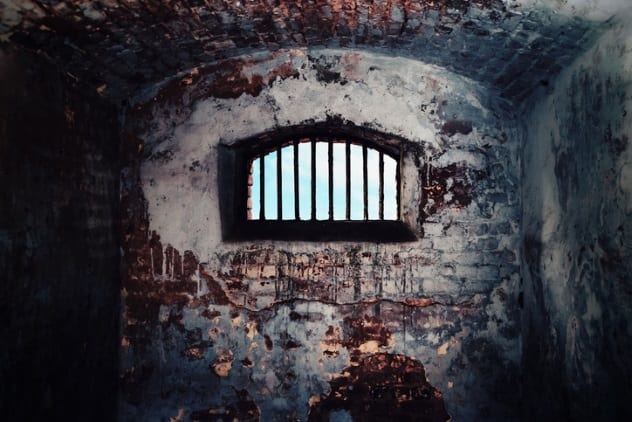
This system came from the United States, where there had been significant debate on the matter of prison reform. There was a prevailing fear that the institutions of society and family were breaking down in the 1820s, which fueled a push toward rehabilitation of convicts. Most thought that criminals were simply lacking in discipline, so the focus shifted to teaching it.[6] Earlier prison reformers had called for humanitarian efforts to improve the conditions of prisoners. Reformers felt that those efforts had failed to make any change, so harsher methods were needed. The harsher methods that they had in mind were a little like a grown-up time-out. Prisons were reformed so that inmates were forced to sit alone and think about what they’d done.
Proponents of this system felt that criminals had come to their life of crime through wicked influences, so the solution was to limit their influences going forward. Prisoners were isolated from their peers under this system. Other inmates were considered a wicked influence, and officials did their absolute best to limit that influence. Their absolute best was bizarre and dehumanizing. When gathered for exercise, prisoners were forced to wear caps that covered their faces, and they were assigned numbers to replace their names. Prison yards kept long ropes knotted at 4.6-meter (15 ft) intervals. That was how far away from one another they wanted inmates at all times, even when they exercised in silence. The second leg of the separate system was to expose inmates liberally to good influences. In the 19th century, that meant Christianity. Chapel was mandatory, and the only time prisoners were allowed to use their voices was while singing hymns. But even there, inmates weren’t able to sit next to one another. Instead, they were seated in tiny cubicles with a wall between each two inmates. This system, unsurprisingly, led to more than a few cases of insanity, delusions, and suicides.
5 The Silent System

The silent system existed alongside the separate system. Silent system proponents didn’t believe that criminals would be or even could be reformed. Their hope was that prisons could scare potential offenders and scar repeat offenders so much that they would rethink their choices in the future. The assistant director of prisons in the United Kingdom, Sir Edmund du Cane, made a promise to the public that prisoners would get three things during their incarceration: hard bed, hard fare, and hard labor. The usual hammocks prisoners used before were swapped for hard planks of wood with minimal padding, and the food was intentionally bland. Hard labor was the most prominent feature of silent system prisons, and it was mandatory whether or not there was actual work to be done.
The Auburn Prison in New York was a model for the prisons that would adopt this system and eventually became known for its own unique take on it.[7] The Auburn System, as it was later recognized, involved intentionally breaking a prisoner’s spirit. The sort of striped uniforms you generally only see in costume shops now originated at Auburn as a way to distinguish the prisoners from the guards and humiliate them at the same time. Silence was enforced with a whip, prisoners were marched around in lockstep so that they couldn’t look at each other, and even the prison’s keepers never spoke to prisoners. Instead, they gave orders by tapping their canes on the ground. The work was often considered worse than the whippings. A short day was ten hours, and the work was always monotonous and sometimes even pointless. Eventually, the beatings and whippings were outlawed. The officials at Auburn were quick to replace them with more creative punishments, including ice water showers and tying inmates’ hands to a yoke hung behind the neck.
Auburn was considered wildly successful at the time. The prisoners were well and truly broken by the monotony and silence, so rebellions were few and far between. Prison shops were lucrative, and the profit often covered the upkeep. Prison officials from all over the US and Europe visited to take notes on the system used there. Civilians also flocked to Auburn to observe the silent prison for themselves. The officials quickly started to charge admission fees, which they had to double just to cut down on the number of visitors. This brutal system wasn’t abolished entirely until 1914.
4 The Rotary Prison

The change from keeping prisoners crowded together in larger rooms to keeping every inmate in their own tiny isolation chamber meant that new architecture had to be explored. Early on, in 1791, Jeremy Bentham published plans for the panopticon, a round prison with cells facing inward and a guard tower in the center. It allowed fewer guards to keep an eye on more prisoners at one time, minimizing the chances of escape. Just shy of a century later, the rotary jail was introduced. It was a complete inversion of the panopticon, in that the cells were at the center, and each was shaped like a single slice of a whole pie. As the name “rotary jail” suggests, the cells could be rotated by a hand crank. Only one cell could be opened at a time because the door would need to line up with the opening in the bars. The biggest and most famous of these merry-go-round jails was the Pottawattamie County Squirrel Cage Jail in Council Bluffs, Iowa.[8]
The Squirrel Cage was the perfect example of a rotary jail in every way. A small town population in a rural, lawless stretch of the US didn’t want to pay for a huge conventional jailhouse that would need to be staffed by several jailers in perpetuity. Instead, they opted for one jailer and a massive 45-ton rotating drum cut up into cells like slices of a layer cake. The town boasted the biggest of the rotary jails, having three levels instead of the usual two. That proved to be one of its biggest problems, and it was the reason that the jail was dubbed a huge failure within the first two years of its existence. The 45-ton drum balanced precariously on a 0.9-meter (3 ft) square base that was itself balanced precariously on the bare soil. Whenever the ground shifted under its massive weight, the entire thing would jam and trap inmates in their cells.
But that wasn’t nearly where the problems with the rotary jail started. The tiny spaces and isolation was still driving inmates insane, but things were even more dire when the jail had to pack people two to a cell. Petty criminals were housed right alongside ax murderers. Being trapped in a tiny, wedge-shaped cell would probably get to anyone, but being literally stuck with a vicious murderer when the drum jammed would easily have been a waking nightmare. Inmates would do anything to get out of the Squirrel Cage. One inmate, Willie Brown, died by eating glass while trying to get a medical transfer to anywhere else. Others stuck their arms or legs through the bars while the rotary jail moved to injure or amputate the limb. Still others reached through the bars in their sleep only to be rudely awakened when the limb was lopped clean off.
With the residents of County Bluffs still reluctant to pay for a proper modern jail, this place existed and ran right up to 1960, when the fire marshal officially shut it down. An inmate had died in a cell, and due to the jammed drum, no one could reach the body for two days. The residents, by the way, still didn’t want to pay for a new jail and just let inmates run free in the building while the jailer watched TV in his office.
3 The Treadmill
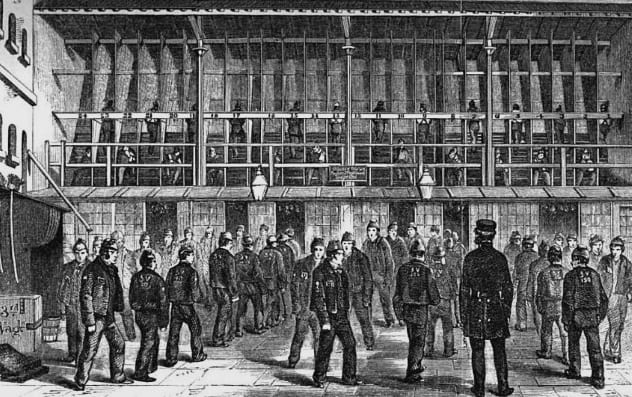
Rotary jails were the strange and complicated answer to prisoner isolation and limited resources, but another rotating device would be used to provide never-ending, monotonous work for inmates under the silent system. The treadmill, now better known as the most boring exercise machine in any gym, once put that mind-numbing effect to use for torture.[9] The first treadmills were huge and resembled a StairMaster more than a running machine. It was invented in England in 1818 as a punishment designed to be just shy of death. Famously, the treadmill almost killed Oscar Wilde. He got out of prison weak and lingered just three years before he died. What made the treadmills of the 19th century so different from our own?
Most notably, the shifts were about six to eight hours long. That’s more than ten times the length of a brisk 30-minute workout. Inmates also didn’t have the luxury of setting their own pace or incline. Each climbed 762 meters (2,500 ft) per hour with no exceptions. That on its own for six to eight hours could have killed, but the prisoners worked the treadmill in pairs. One would climb for two minutes, and then the other would climb while the first rested. Instead of truly resting the prisoners, this seemed to keep them on death’s door without pushing them over the threshold.
The treadmill was initially a literal mill that could grind grain into flour to help support the prison system, but many did nothing at all. This monotony and pointlessness was exactly the aim of the treadmill. Prison guard James Hardie credited the contraption with breaking even the most defiant inmates in New York. He wrote chillingly that it was the machine’s “monotonous steadiness, and not its severity, which constitutes its terror.” Convicts would step off of a shift on the treadmill weakened and vacant, only to go back to their tiny, isolated cells. Despite the glowing reviews from prison staff, American prisons phased the treadmill out in favor of bricklaying, rock-breaking, and cotton-picking. The practice was outlawed in England in 1902 once it was noticed that it was extremely cruel.
2 Picking Oakum
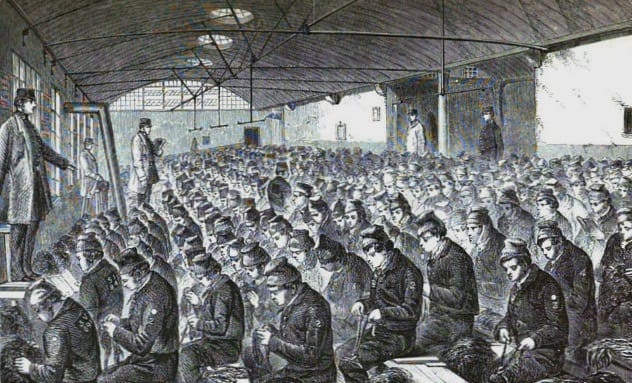
Installing a huge building full of stair-driven mills was pretty expensive. Not every prison could afford to add in a treadmill or a proper shop. But for prisons still looking to make a profit, convicts could be made to pick junk into oakum. “Junk” referred to old ropes coated in waterproof tar that could be teased out into bunches of fiber. The fiber would then be mixed with more tar or even grease to make a waterproofing paste. That paste was used to fill the gaps in the hull of a wooden ship.
Able-bodied prisoners would have to cut ropes into 0.6-meter (2 ft) sections and then beat those lengths with a mallet until the tar broke up. Once the tar was shattered, the junk would often be passed along to inmates who were deemed weaker: the elderly, women, and children.[10] They would be tasked with breaking the rope up into fibers. First, it would be attached to an iron hook that was held between the thighs. Then, inmates would use an iron nail, a scrap of tin, a knife, or, more often than not, their bare hands to break up the fibers. The ropes had to be uncoiled, unraveled, picked apart, and then shredded. Prisoners quickly learned that fingers made the task go fastest but left them with tar-stained fingers and open, dirty sores. Since oakum had to be traded for food, most opted to suffer the pain rather than starve.
Oakum-picking was often done in a workhouse, so some prison officials felt it allowed for too much socializing. Inmates often sat in rows under the watchful eye of a warder with a whip. There wasn’t much room for socializing already, but the paranoia of prison officials was hard to calm. Many prisons across England would adopt the treadmill regardless of the expense, and picking oakum would be relegated to women and children. The mass switch to treadmills did happen to coincide with the switch to iron ships. Where wooden ships were made of planks with gaps that needed to be sealed, the new metal ships could be welded shut. The demand for oakum plummeted, and prison staff happened to decide at just that moment that stair-climbing was more moral than shredding one’s fingers on old rope.
1 The Crank
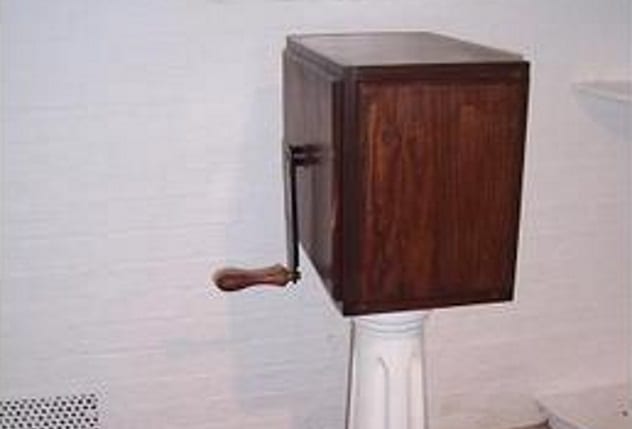
Some prison administrations felt that having inmates occupy the same space to work the treadmill or pick oakum was far too much mingling. When they wanted to keep them properly isolated, inmates had to do work alone in their cells. But officials had also noticed something they found very interesting: Inmates hated a pointless task more than a meaningful one. This presented them with an obvious solution: the crank.[11]
The crank was literally a crank that stuck out of a small wooden box that was usually set on a table or pedestal in the inmate’s cell. Despite its innocuous description, it was a truly soul-crushing monstrosity designed to exhaust inmates mentally and physically. Inside the box was a drum or paddle that turned nothing but sand and rocks. The axle on which the crank turned had a screw, which warders could tighten or loosen depending on how much punishment they wanted to mete out or, possibly, their mood that day. The screw would make the crank easier or harder to turn, and warders who came in to adjust it earned themselves the nickname “screws” for the suffering they brought with them.
A prisoner left in isolation with the crank usually didn’t have to worry about a beating if they just ignored the machine. Instead, they could worry about starvation. Each crank had a counter somewhere on the box that kept up with the number of turns. An inmate had to reach a certain number of turns before they were allowed to do basic things like eat and sleep. Most were expected to make at least 10,000 rotations a day—2,000 for breakfast, 3,000 each for lunch and dinner, and 2,000 more before bed. Some prisons would keep the inmate in the isolated crank cell well into the night if they had not completed the number of turns required, meaning that the inmate would miss supper and get very little sleep. The next day, that prisoner would have to operate the crank again while hungry and exhausted. Ultimately, the crank would be outlawed along with the treadmill, but not before it jellied the brains of many a Victorian prisoner.
Renee is an Atlanta-based graphic designer and writer.
Read more about institutionalized torture on 10 Ways Prisons Torture Inmates In Modern Times and 10 Brutal Accounts Of Torture In Old Insane Asylums.
